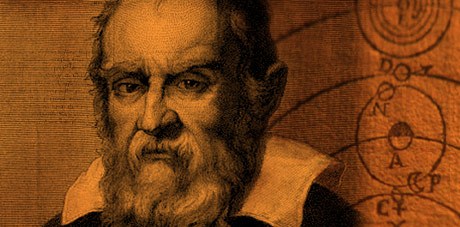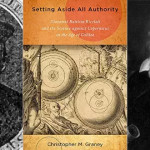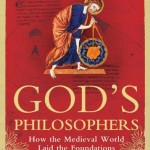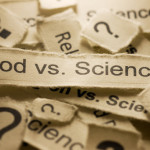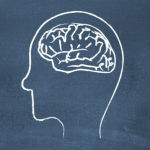The Galileo Controversy
by Catholic Answers
Filed under Galileo, Uncategorized
It is commonly believed that the Catholic Church persecuted Galileo for abandoning the geocentric (earth-at-the-center) view of the solar system for the heliocentric (sun-at-the-center) view. The Galileo case, for many anti-Catholics, is thought to prove that the Church abhors science, refuses to abandon outdated teachings, and is not infallible. For Catholics, the episode is often an embarrassment. It shouldn’t be.
This article provides a brief explanation of what really happened to Galileo.
Anti-scientific?
The Church is not anti-scientific. It has supported scientific endeavors for centuries. During Galileo’s time, the Jesuits had a highly respected group of astronomers and scientists in Rome. In addition, many notable scientists received encouragement and funding from the Church and from individual Church officials. Many of the scientific advances during this period were made either by clerics or as a result of Church funding.
Nicolaus Copernicus dedicated his most famous work, On the Revolution of the Celestial Orbs, in which he gave an excellent account of heliocentricity, to Pope Paul III. Copernicus entrusted this work to Andreas Osiander, a Lutheran clergyman who knew that Protestant reaction to it would be negative, since Martin Luther seemed to have condemned the new theory, and, as a result, the book would be condemned. Osiander wrote a preface to the book, in which heliocentrism was presented only as a theory that would account for the movements of the planets more simply than geocentrism did—something Copernicus did not intend.
Ten years prior to Galileo, Johannes Kepler published a heliocentric work that expanded on Copernicus’ work. As a result, Kepler also found opposition among his fellow Protestants for his heliocentric views and found a welcome reception among some Jesuits who were known for their scientific achievements.
Clinging to Tradition?
Anti-Catholics often cite the Galileo case as an example of the Church refusing to abandon outdated or incorrect teaching, and clinging to a "tradition." They fail to realize that the judges who presided over Galileo’s case were not the only people who held to a geocentric view of the universe. It was the received view among scientists at the time.
Centuries earlier, Aristotle had refuted heliocentricity, and by Galileo’s time, nearly every major thinker subscribed to a geocentric view. Copernicus refrained from publishing his heliocentric theory for some time, not out of fear of censure from the Church, but out of fear of ridicule from his colleagues.
Many people wrongly believe Galileo proved heliocentricity. He could not answer the strongest argument against it, which had been made nearly two thousand years earlier by Aristotle: If heliocentrism were true, then there would be observable parallax shifts in the stars’ positions as the earth moved in its orbit around the sun. However, given the technology of Galileo’s time, no such shifts in their positions could be observed. It would require more sensitive measuring equipment than was available in Galileo’s day to document the existence of these shifts, given the stars’ great distance. Until then, the available evidence suggested that the stars were fixed in their positions relative to the earth, and, thus, that the earth and the stars were not moving in space—only the sun, moon, and planets were.
Thus Galileo did not prove the theory by the Aristotelian standards of science in his day. In his Letter to the Grand Duchess Christina and other documents, Galileo claimed that the Copernican theory had the "sensible demonstrations" needed according to Aristotelian science, but most knew that such demonstrations were not yet forthcoming. Most astronomers in that day were not convinced of the great distance of the stars that the Copernican theory required to account for the absence of observable parallax shifts. This is one of the main reasons why the respected astronomer Tycho Brahe refused to adopt Copernicus fully.
Galileo could have safely proposed heliocentricity as a theory or a method to more simply account for the planets’ motions. His problem arose when he stopped proposing it as a scientific theory and began proclaiming it as truth, though there was no conclusive proof of it at the time. Even so, Galileo would not have been in so much trouble if he had chosen to stay within the realm of science and out of the realm of theology. But, despite his friends’ warnings, he insisted on moving the debate onto theological grounds.
In 1614, Galileo felt compelled to answer the charge that this "new science" was contrary to certain Scripture passages. His opponents pointed to Bible passages with statements like, "And the sun stood still, and the moon stayed..." (Josh. 10:13). This is not an isolated occurrence. Psalms 93 and 104 and Ecclesiastes 1:5 also speak of celestial motion and terrestrial stability. A literalistic reading of these passages would have to be abandoned if the heliocentric theory were adopted. Yet this should not have posed a problem. As Augustine put it, "One does not read in the Gospel that the Lord said: ‘I will send you the Paraclete who will teach you about the course of the sun and moon.’ For he willed to make them Christians, not mathematicians." Following Augustine’s example, Galileo urged caution in not interpreting these biblical statements too literally.
Unfortunately, throughout Church history there have been those who insist on reading the Bible in a more literal sense than it was intended. They fail to appreciate, for example, instances in which Scripture uses what is called "phenomenological" language—that is, the language of appearances. Just as we today speak of the sun rising and setting to cause day and night, rather than the earth turning, so did the ancients. From an earthbound perspective, the sun does appear to rise and appear to set, and the earth appears to be immobile. When we describe these things according to their appearances, we are using phenomenological language.
The phenomenological language concerning the motion of the heavens and the non-motion of the earth is obvious to us today, but was less so in previous centuries. Scripture scholars of the past were willing to consider whether particular statements were to be taken literally or phenomenologically, but they did not like being told by a non-Scripture scholar, such as Galileo, that the words of the sacred page must be taken in a particular sense.
During this period, personal interpretation of Scripture was a sensitive subject. In the early 1600s, the Church had just been through the Reformation experience, and one of the chief quarrels with Protestants was over individual interpretation of the Bible.
Theologians were not prepared to entertain the heliocentric theory based on a layman’s interpretation. Yet Galileo insisted on moving the debate into a theological realm. There is little question that if Galileo had kept the discussion within the accepted boundaries of astronomy (i.e., predicting planetary motions) and had not claimed physical truth for the heliocentric theory, the issue would not have escalated to the point it did. After all, he had not proved the new theory beyond reasonable doubt.
Galileo "Confronts" Rome
Galileo came to Rome to see Pope Paul V (1605-1621). The pope, weary of controversy, turned the matter over to the Holy Office, which issued a condemnation of Galileo’s theory in 1616. Things returned to relative quiet for a time, until Galileo forced another showdown.
At Galileo’s request, Cardinal Robert Bellarmine, a Jesuit—one of the most important Catholic theologians of the day—issued a certificate that, although it forbade Galileo to hold or defend the heliocentric theory, did not prevent him from conjecturing it. When Galileo met with the new pope, Urban VIII, in 1623, he received permission from his longtime friend to write a work on heliocentrism, but the new pontiff cautioned him not to advocate the new position, only to present arguments for and against it. When Galileo wrote the Dialogue Concerning the Two Chief World Systems, he used an argument the pope had offered, and placed it in the mouth of his character Simplicio. Galileo, perhaps inadvertently, made fun of the pope, a result that could only have disastrous consequences. Urban felt mocked and could not believe how his friend could disgrace him publicly. Galileo had mocked the very person he needed as a benefactor. He also alienated his long-time supporters, the Jesuits, with attacks on one of their astronomers. The result was the infamous trial, which is still heralded as the final separation of science and religion.
Tortured for His Beliefs?
In the end, Galileo recanted his heliocentric teachings, but it was not—as is commonly supposed—under torture nor after a harsh imprison- ment. Galileo was, in fact, treated surprisingly well.
As historian Giorgio de Santillana, who is not overly fond of the Catholic Church, noted, "We must, if anything, admire the cautiousness and legal scruples of the Roman authorities." Galileo was offered every convenience possible to make his imprisonment in his home bearable.
Galileo’s friend Nicolini, Tuscan ambassador to the Vatican, sent regular reports to the court regarding affairs in Rome. Many of his letters dealt with the ongoing controversy surrounding Galileo.
Nicolini revealed the circumstances surrounding Galileo’s "imprisonment" when he reported to the Tuscan king: "The pope told me that he had shown Galileo a favor never accorded to another" (letter dated Feb. 13, 1633); " . . . he has a servant and every convenience" (letter, April 16); and "[i]n regard to the person of Galileo, he ought to be imprisoned for some time because he disobeyed the orders of 1616, but the pope says that after the publication of the sentence he will consider with me as to what can be done to afflict him as little as possible" (letter, June 18).
Had Galileo been tortured, Nicolini would have reported it to his king. While instruments of torture may have been present during Galileo’s recantation (this was the custom of the legal system in Europe at that time), they definitely were not used.
The records demonstrate that Galileo could not be tortured because of regulations laid down in The Directory for Inquisitors (Nicholas Eymeric, 1595). This was the official guide of the Holy Office, the Church office charged with dealing with such matters, and was followed to the letter.
As noted scientist and philosopher Alfred North Whitehead remarked, in an age that saw a large number of "witches" subjected to torture and execution by Protestants in New England, "the worst that happened to the men of science was that Galileo suffered an honorable detention and a mild reproof." Even so, the Catholic Church today acknowledges that Galileo’s condemnation was wrong. The Vatican has even issued two stamps of Galileo as an expression of regret for his mistreatment.
Infallibility
Although three of the ten cardinals who judged Galileo refused to sign the verdict, his works were eventually condemned. Anti-Catholics often assert that his conviction and later rehabilitation somehow disproves the doctrine of papal infallibility, but this is not the case, for the pope never tried to make an infallible ruling concerning Galileo’s views.
The Church has never claimed ordinary tribunals, such as the one that judged Galileo, to be infallible. Church tribunals have disciplinary and juridical authority only; neither they nor their decisions are infallible.
No ecumenical council met concerning Galileo, and the pope was not at the center of the discussions, which were handled by the Holy Office. When the Holy Office finished its work, Urban VIII ratified its verdict, but did not attempt to engage infallibility.
Three conditions must be met for a pope to exercise the charism of infallibility: (1) he must speak in his official capacity as the successor of Peter; (2) he must speak on a matter of faith or morals; and (3) he must solemnly define the doctrine as one that must be held by all the faithful.
In Galileo’s case, the second and third conditions were not present, and possibly not even the first. Catholic theology has never claimed that a mere papal ratification of a tribunal decree is an exercise of infallibility. It is a straw man argument to represent the Catholic Church as having infallibly defined a scientific theory that turned out to be false. The strongest claim that can be made is that the Church of Galileo’s day issued a non-infallible disciplinary ruling concerning a scientist who was advocating a new and still-unproved theory and demanding that the Church change its understanding of Scripture to fit his.
It is a good thing that the Church did not rush to embrace Galileo’s views, because it turned out that his ideas were not entirely correct, either. Galileo believed that the sun was not just the fixed center of the solar system but the fixed center of the universe. We now know that the sun is not the center of the universe and that it does move—it simply orbits the center of the galaxy rather than the earth.
As more recent science has shown, both Galileo and his opponents were partly right and partly wrong. Galileo was right in asserting the mobility of the earth and wrong in asserting the immobility of the sun. His opponents were right in asserting the mobility of the sun and wrong in asserting the immobility of the earth.
Had the Catholic Church rushed to endorse Galileo’s views—and there were many in the Church who were quite favorable to them—the Church would have embraced what modern science has disproved.
Related Posts
Note: Our goal is to cultivate serious and respectful dialogue. While it's OK to disagree—even encouraged!—any snarky, offensive, or off-topic comments will be deleted. Before commenting please read the Commenting Rules and Tips. If you're having trouble commenting, read the Commenting Instructions.




